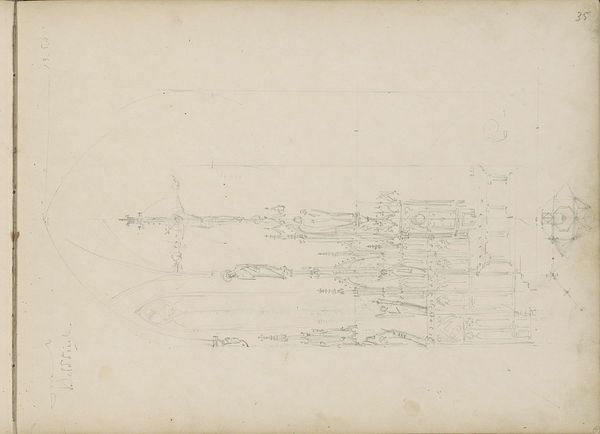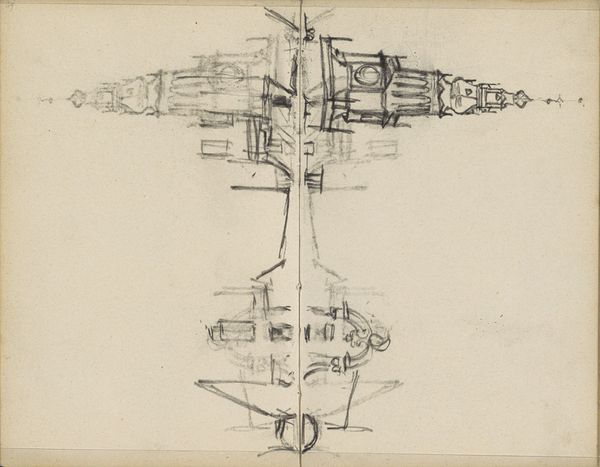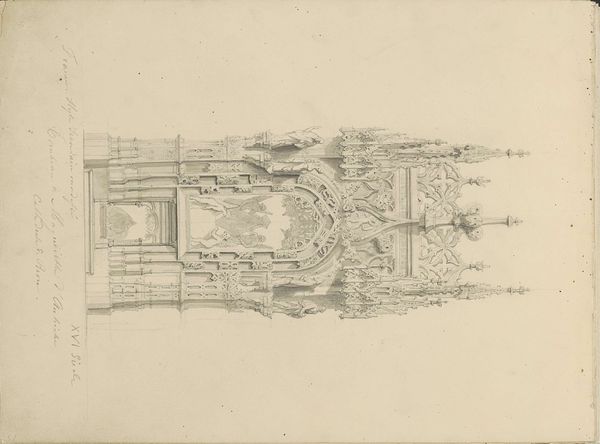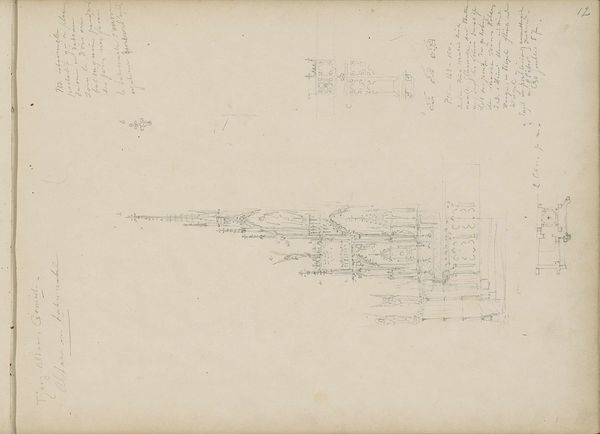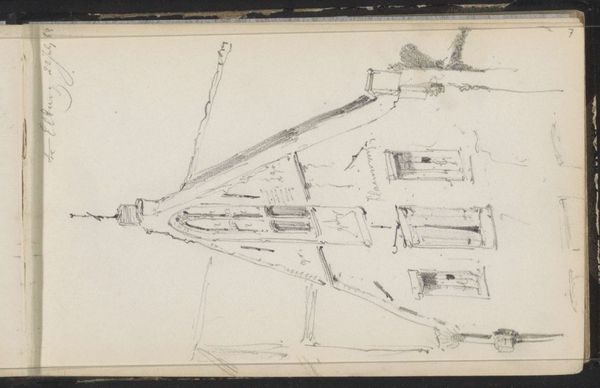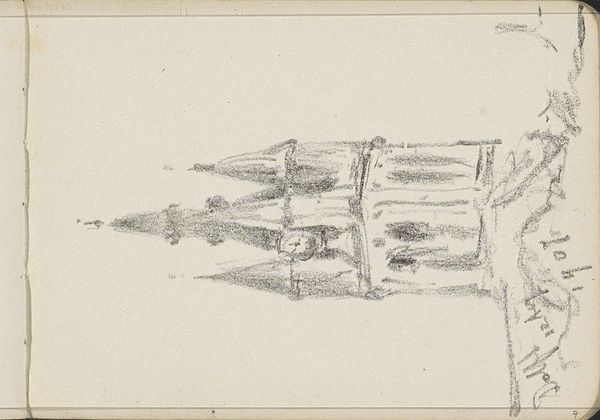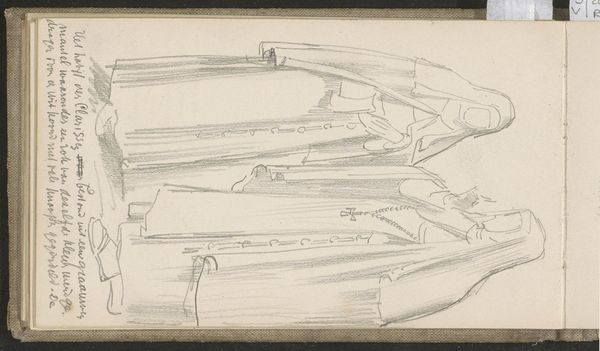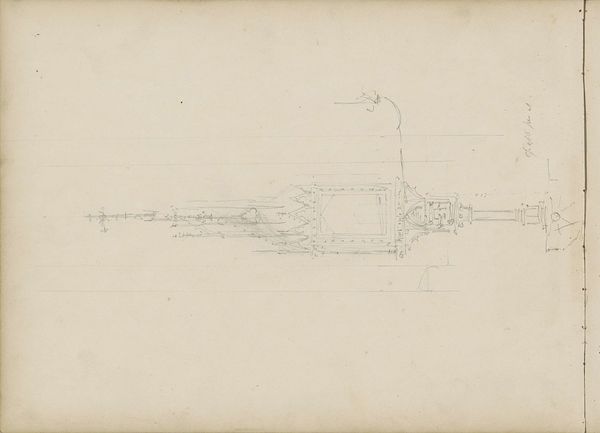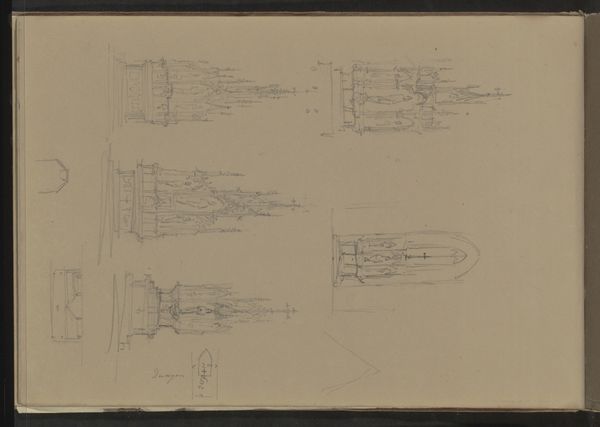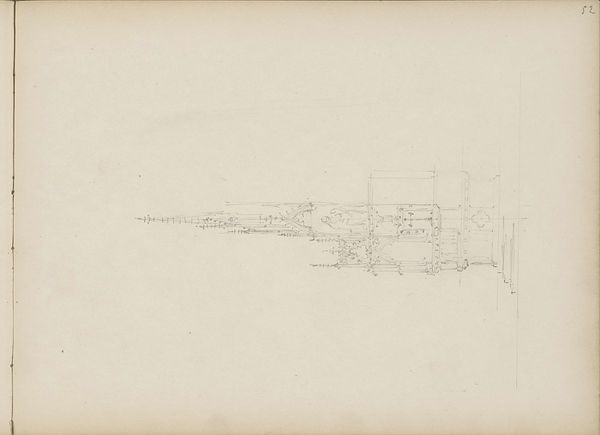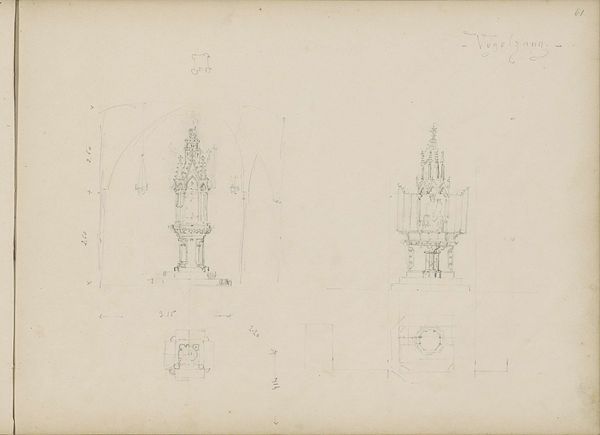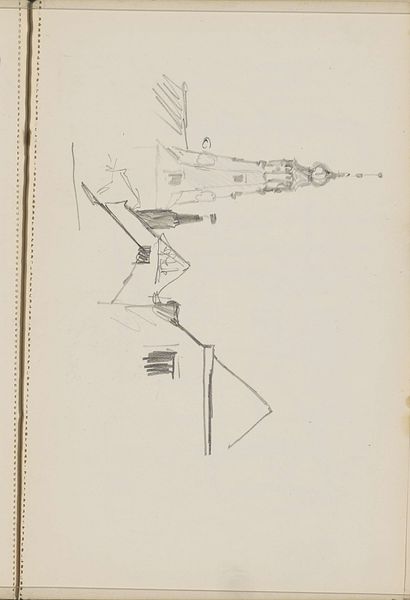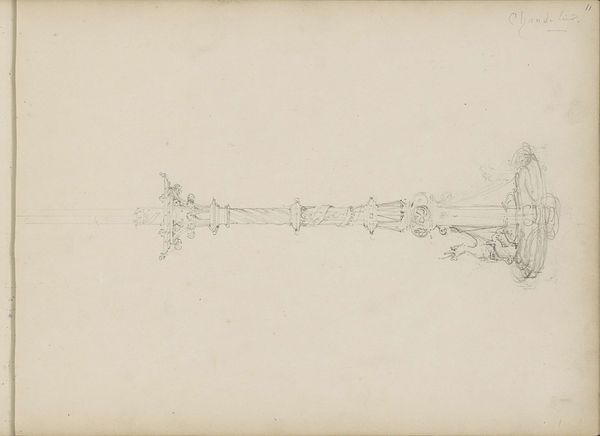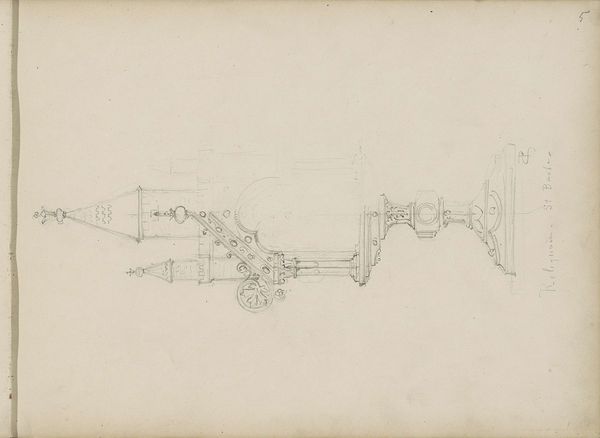
Copyright: Rijks Museum: Open Domain
Editor: This drawing by Pierre Joseph Hubert Cuypers, titled "Veertiende-eeuwse gotische architectuur" or "Fourteenth-century Gothic Architecture," made around 1850, features precise pencil lines detailing Gothic architectural elements. It has a sort of quiet intensity to it, capturing the essence of that style. How do you interpret this work in the context of the 19th century? Curator: This drawing gives us an opportunity to reflect on the 19th-century Gothic Revival and its implications. Consider the social and political context: the revival often served nationalist agendas, connecting the present to a perceived glorious past. What does it mean to look back at the Gothic during a time of rapid industrialization and social change? Is it purely aesthetic, or something more? Editor: I hadn’t thought of the political implications. I guess it is interesting to consider that people at this time may have longed for the social structure and order of a prior era. What would a renewed interest in this aesthetic mean, politically, at this time? Curator: Indeed, this is an aesthetic choice laden with sociopolitical meaning. Cuypers, in his precise rendering of Gothic forms, isn't just documenting architecture. He is also participating in a dialogue about national identity, religious tradition, and even the ideal forms of social organization. Consider the drawing's delicate nature: How does that contrast with the monumental scale and perceived strength of actual Gothic architecture? Editor: It’s like a memory or a dream of the Gothic. The contrast makes me think about how the past can be reshaped to fit the present. Thanks, seeing it that way is a totally new perspective. Curator: Precisely. By examining these historical and cultural layers, we gain a more nuanced understanding of not just the artwork, but the era that produced it, too.
Comments
No comments
Be the first to comment and join the conversation on the ultimate creative platform.
